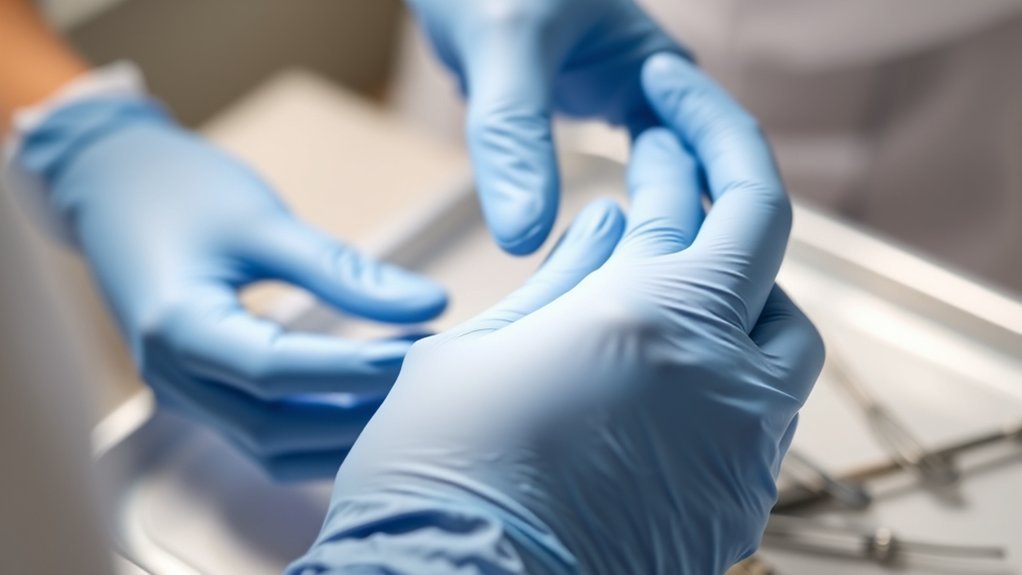If you’re approaching your due date and looking for ways to encourage labor, a membrane sweep might be an option worth considering. This procedure, performed by your healthcare provider, involves a few straightforward steps designed to stimulate contractions. Understanding what a membrane sweep entails, its timing, and its potential benefits can help you make an informed decision. Let’s explore how this process works and what you need to know before moving forward.
What Is a Membrane Sweep?

A membrane sweep is a procedure designed to help initiate labor by stimulating the body’s natural processes.
During the procedure, your healthcare provider inserts a gloved finger into your cervix and gently separates the amniotic sac from the uterine wall. This action releases hormones called prostaglandins, which can encourage contractions.
During a membrane sweep, a gloved finger is used to separate the amniotic sac from the uterine wall, releasing hormones that may trigger contractions.
Typically performed in a medical setting, a membrane sweep is quick and may cause mild discomfort, but it’s generally safe for most women. You might notice some spotting or cramping afterward, which is normal.
While it’s not guaranteed to start labor, many women experience positive results within days. Always discuss the procedure with your healthcare provider to verify it’s appropriate for your specific situation.
When Is a Membrane Sweep Recommended?

Membrane sweeps are typically recommended for women who are near or past their due date and haven’t gone into labor naturally.
This procedure may also be considered for those with a favorable cervix who are looking to avoid medical induction. If your healthcare provider believes your pregnancy is progressing normally, they might suggest a membrane sweep to encourage labor.
It’s important to discuss your options and any concerns with your provider during prenatal visits. They’ll evaluate your individual circumstances, including health conditions and the baby’s position, before making a recommendation.
Keep in mind that a membrane sweep isn’t suitable for everyone, so understanding the risks and benefits with your provider is essential for informed decision-making.
How Is a Membrane Sweep Performed?

During a membrane sweep, your healthcare provider uses a gloved finger to gently separate the amniotic sac from the cervix. This procedure is typically performed during a routine examination when you’re near or past your due date.
During a membrane sweep, your provider gently separates the amniotic sac from the cervix to potentially initiate labor.
Here’s what you can expect:
- You’ll lie on an examination table, similar to a pelvic exam.
- Your provider will insert a finger into your cervix.
- They’ll gently move the finger in a circular motion.
- The goal is to release hormones that may kickstart labor.
- The entire process usually lasts only a few minutes.
While some discomfort may occur, it’s generally quick and straightforward.
Be sure to discuss any concerns or questions with your provider beforehand for clarity.
Potential Benefits of a Membrane Sweep
After understanding how a membrane sweep is performed, it’s important to contemplate the potential benefits this procedure may offer.
One of the primary advantages is that it can help initiate labor, especially if you’re approaching or past your due date. This can reduce the likelihood of needing medical interventions, such as induction.
Additionally, a membrane sweep may lead to a more favorable birth experience by promoting natural progression. Many women report shorter labor durations following the procedure, which can contribute to a more positive delivery process.
It’s also generally considered a safe option, with minimal risks involved. Overall, if you’re seeking ways to encourage labor, discussing a membrane sweep with your healthcare provider can be beneficial.
Risks and Considerations of a Membrane Sweep
While a membrane sweep can offer benefits, it’s important to evaluate the potential risks involved. Understanding these risks can help you make an informed decision.
Here are key considerations:
- Discomfort or pain: You may experience cramping or discomfort during the procedure.
- Bleeding: Light bleeding can occur, which is usually normal but should be monitored.
- Infection: There’s a slight risk of introducing bacteria into the uterus.
- Preterm labor: In some cases, the sweep might trigger contractions too early.
- Failed induction: The procedure mightn’t always lead to labor, necessitating other interventions.
Always discuss your concerns with your healthcare provider to guarantee your safety and well-being.
Frequently Asked Questions
Can a Membrane Sweep Be Performed at Home?
No, a membrane sweep shouldn’t be performed at home. It requires a trained healthcare professional to guarantee safety and effectiveness. Attempting it independently could pose risks to both you and your baby’s health.
How Long After a Membrane Sweep Does Labor Typically Start?
Labor typically starts within 24 to 48 hours after a membrane sweep. However, each person’s body reacts differently, so you might experience labor sooner or later than this timeframe. Always consult your healthcare provider for guidance.
Is a Membrane Sweep Painful?
A membrane sweep can be uncomfortable and may cause brief pain or cramping. Everyone’s experience varies, but you might feel pressure during the procedure. Discuss any concerns with your healthcare provider for personalized guidance.
Can I Refuse a Membrane Sweep?
You can always refuse a membrane sweep; after all, it’s your body. If you’re uncomfortable, discuss your concerns with your healthcare provider. They’ll respect your decision and help you explore other options for labor induction.
What Should I Do After a Membrane Sweep?
After a membrane sweep, you should monitor for contractions and any signs of labor. Stay hydrated, rest, and follow your healthcare provider’s advice regarding activities. Reach out if you experience unusual discomfort or concerns.
Conclusion
In the journey toward welcoming your little one, a membrane sweep can serve as a gentle nudge, encouraging labor to begin. While it may bring some discomfort, the potential benefits often outweigh the risks. By understanding the process and its purpose, you empower yourself to make informed choices. As you stand on the threshold of parenthood, this simple procedure could be the key that opens the door to your baby’s arrival, turning anticipation into joy.
